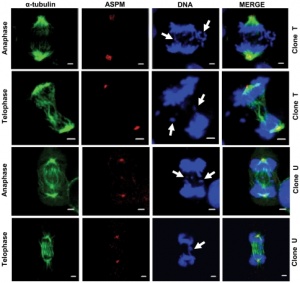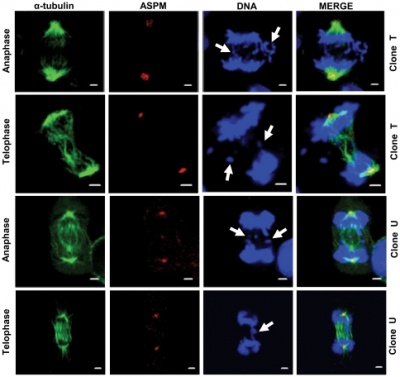User:Z3293267: Difference between revisions
From Embryology
No edit summary |
No edit summary |
||
| Line 37: | Line 37: | ||
--[[User:Z3293267|z3293267]] 22:45, 1 August 2011 (EST) | --[[User:Z3293267|z3293267]] 22:45, 1 August 2011 (EST) | ||
--[[User:S8600021|Mark Hill]] 10:03, 3 August 2011 (EST) These answers are fine. | --[[User:S8600021|Mark Hill]] 10:03, 3 August 2011 (EST) These answers are fine. | ||
== Lab 2: Online Assessment == | == Lab 2: Online Assessment == | ||
| Line 56: | Line 54: | ||
--[[User:Z3293267|z3293267]] 21:01, 7 August 2011 (EST) | --[[User:Z3293267|z3293267]] 21:01, 7 August 2011 (EST) | ||
== Lab 3: Online Assessment == | == Lab 3: Online Assessment == | ||
| Line 79: | Line 76: | ||
--[[User:Z3293267|z3293267]] 22:11, 16 August 2011 (EST) | --[[User:Z3293267|z3293267]] 22:11, 16 August 2011 (EST) | ||
--[[User:S8600021|Mark Hill]] 09:34, 17 August 2011 (EST) The answer to dietary requirement is not the answer I sought, the component required prevents cretinism. The second part with the image is exactly as requested. | --[[User:S8600021|Mark Hill]] 09:34, 17 August 2011 (EST) The answer to dietary requirement is not the answer I sought, the component required prevents cretinism. The second part with the image is exactly as requested. | ||
== Lab 4: Online Assessment == | == Lab 4: Online Assessment == | ||
| Line 104: | Line 99: | ||
:*Management | :*Management | ||
--[[User:Z3293267| | --[[User:Z3293267|z3293267]] 18:08, 24 August 2011 (EST) | ||
Revision as of 18:12, 24 August 2011
Lab Attendance
Lab 1 Attendance:
- --z3293267 12:55, 28 July 2011 (EST)
Lab 2 Attendance:
- --z3293267 13:03, 4 August 2011 (EST)
Lab 3 Attendance:
- --z3293267 12:43, 11 August 2011 (EST)
Lab 4 Attendance:
- --z3293267 11:51, 18 August 2011 (EST)
Lab 1: Online Assessment
Identify the origin of In Vitro Fertilization and the 2010 Nobel Prize winner associated with this technique.
- John Rock, an American obstetrician and gynecologist, was a pioneer in in vitro fertilization and sperm freezing. He helped many of his patients achieve pregnancy and became known as a "ground-breaking infertility specialist." In 1977, Patrick Steptoe and Robert Edwards successfully carried out a pioneering conception which resulted in the birth of the world's first baby to be conceived by IVF.
- Robert G. Edwards was awarded the 2010 Nobel Prize in Physiology or Medicine.
Identify a recent paper on fertilisation and describe its key findings.
- The article, Correlation of Body Mass Index with Outcome of In Vitro Fertilization in a Developing Country[1], examined individuals in a developing country, examining the relationship between their body mass index and the outcome of in vitro fertilization. It correlated ovarian response to stimulation and IVF outcome according to the women's BMI. The conclusion came to an increased BMI is associated with poorer IVF outcome.[1]
Identify 2 congenital anomalies.
- Down syndrome (Trisomy 21)
- Turner's syndrome
--z3293267 22:45, 1 August 2011 (EST)
--Mark Hill 10:03, 3 August 2011 (EST) These answers are fine.
Lab 2: Online Assessment
Identify the ZP protein that spermatozoa binds and how is this changed (altered) after fertilization.
- The ZP protein that binds to the spermatozoa is the ZP3. Plasma membranes of the spermatozoa and oocyte fuse, during fertilisation, and the head and tail of the spermatozoa enter the oocyte, leaving the spermatozoa's plasma membrane attached to the oocyte's plasma membrane.
- Turner Syndrome[2] can be defined as loss or abnormality of the second X chromosome in at least one cell line in a phenotypic female.[2]
- The article, Optimising management in Turner syndrome: from infancy to adult transfer[3], reviewed that there is a potential for increased height with growth hormone treatment. Also discussed is the spectrum of gonadal function, ranging from the onset of spontaneous puberty and the potential for fertility to complete gonadal failure.[3]
--z3293267 21:01, 7 August 2011 (EST)
Lab 3: Online Assessment
What is the maternal dietary requirement for late neural development?
Edit:--z3293267 10:26, 17 August 2011 (EST)
- A maternal dietary requirement for late neural development is iodine.
- Iodine deficiency can lead to goiter(an enlargement of the thyroid gland) development when the amount of thyroid hormone in the blood is low. It can also cause cretinism, a condition of hypothyroidism during fetal life, infancy, and childhood. Characteristics include both severe stunted body growth and mental retardation. Iodine deficiency is the leading cause of preventable mental retardation in lesser developed countries.
- The primary dietary source of iodine nowadays is iodized salt (table or sea salt that has been fortified with iodine). It can also be found in certain seafood e.g, shellfish, sardines, tuna, clams, herring and lobster.
Upload a picture relating to your group project.
- Chromosome segregation defects associated with abnormal spindles in UBE3A shRNA knockdown clones.[4]
--z3293267 22:11, 16 August 2011 (EST)
--Mark Hill 09:34, 17 August 2011 (EST) The answer to dietary requirement is not the answer I sought, the component required prevents cretinism. The second part with the image is exactly as requested.
Lab 4: Online Assessment
The allantois, identified in the placental cord, is continuous with what anatomical structure?
- The allantois, an endoderm in origin extending from the early hindgut, is continuous to the superior end of developing bladder.
Identify the 3 vascular shunts, and their location, in the embryonic circulation.
- Ductus arteriosus: located between the pulmonary artery and the descending aorta.
- Ductus venosus: located between the portal vein, umbilical vein and inferior vena cava.
- Foramen ovale: located between the left and right atria.
Identify the Group project sub-section that you will be researching.
- Progonsis
- Treatment
- Management
--z3293267 18:08, 24 August 2011 (EST)

